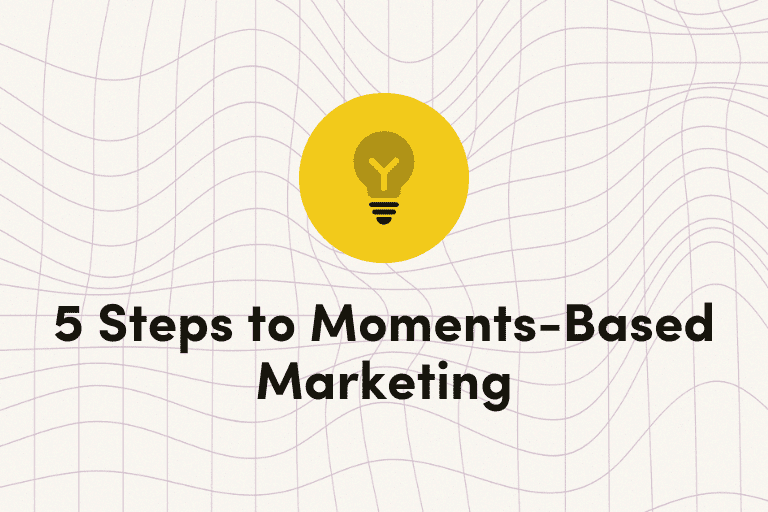Email Personalization: What Are Personalized Emails?
Email personalization refers to the craft of creating unique messaging for each customer through your email marketing communications.
By personalizing your emails, you’ll be able to drive higher engagement rates, leading to more opens, clicks, and revenue generation. Email personalization has been shown to increase open rates by 26%, and personalized email marketing provides a median ROI of 122%.
When customers feel that you’re paying attention to their needs and desires, they’re more likely to trust your brand and remain loyal to you over time. But when you have a large contact list, you need to put the right practices in place to ensure you’re delivering a personalized experience to each customer, regardless of your list size.
Achieving email personalization at scale requires a combination of the right technology, data, and techniques. Here’s a look at how to get started with email personalization.
Integrate All of Your Customer Data
To deliver a personalized experience to all of your customers, you need to have a 360-degree view of each customer—understand what makes them tick. This requires collecting and integrating data from your entire marketing and sales technology stack, including your email marketing database, your CRM, your mobile marketing platform, your e-commerce solution, your retail point-of-sale solution, and zero-party data that your customers have voluntarily shared with your brand.
Combining this data will give you a full picture of each customer—their demographic details, purchase history, and user preferences. It should also integrate real-time user actions, like each time they click on a link or open an email, for example.
Developing comprehensive, centralized user profiles on each of your customers will make it much easier to segment your customer base and deliver personalized email marketing campaigns that fit their unique needs.
Segment Your Audiences
Most email marketing solutions offer some level of customer segmentation, but to deliver true personalization at scale, you need to implement multiple levels of segmentation.
For instance, one segmentation level might be “new signup vs. returning visitor.” Then, to segment returning visitors further, you might offer a greater discount for those who’ve browsed multiple pages on your website but haven’t yet made a purchase.
You can go even deeper than that. Your segmentation can include regional segmentation to account for different time zones, languages, and even weather patterns (i.e., recommending winter coats to shoppers in the Northeast and t-shirts to shoppers in the South). You can even segment users on an individual level by incorporating dynamic content that reflects individual variables, such as their name, address, favorite products, and other historical or zero-party data.
Personalized Marketing Examples
Personalized emails can be delivered based on a larger campaign in response to a trigger—such as a special event like the user’s birthday or subscription renewal date—or a user event— like a newsletter signup, product link click, or purchase. Here are some ways email personalization can be used.
Customized Information in a Widespread Promotion
Even if you’re launching a sitewide promotion, you can deliver a personalized experience in your email marketing to your users. You might include the customer’s name in the email subject line and email header, and even feature links to product categories in which they’ve previously purchased. You might also include a reminder about their rewards program status, encouraging them to make more purchases to get to the next bonus level, for example.
Personalized Emails Timed to a Set Date
Special birthday promotions are a great way to offer email personalization. You can use other important dates, such as a subscription renewal, or a reminder to order more of a replenishable product, as other opportunities to reconnect with your customers. Or, for instance, if an author the customer has previously purchased books from has a new release coming out, you might send an email promotion about the book launch to that customer.
Personalized Emails Triggered by User Actions
Emails launched in response to real-time user actions are one of the most effective ways to engage with your users. For example, if a user clicks on a product link, but doesn’t add the product to their shopping cart, abandoning their browsing session, you can follow up with a “still interested?” message spotlighting the product and other curated recommendations from the same category, encouraging them to return to your site to complete the purchase.
By incorporating personalization into every part of your email marketing strategy, you can show your customers that your brand recognizes their unique needs, and can provide them with content and recommendations that they’ll care about, based on their brand interactions and other known data. As a result, they’ll be more likely to engage with your content and buy your products.
Moving Beyond Email
While email personalization is important, it’s only a piece of a broader form of personalization: cross-channel marketing. With cross-channel marketing, you can further personalize the customer experience by delivering your marketing messages across the channels that your users prefer to engage with, based on either their user history or on real-time events.
For instance, if a customer typically opens messages received via SMS but never via email, you might default to sending that customer SMS messages. You can develop sequenced campaigns that incorporate email marketing alongside other channels, including SMS messaging, in-app messages, push notifications, and even direct mail, leveraging each channel based on the customer’s response or lack of response to the previous message.
Using a cross-channel marketing platform like Iterable gives you the capabilities you need to deliver a personalized customer experience at scale, via email marketing and your other marketing channels. With Iterable, you can leverage data and technology to deliver a best-in-class experience to make every customer feel at home with your brand.






























